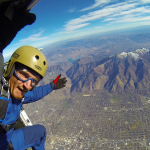-
Content
6 -
Joined
-
Last visited
Never -
Feedback
0%
Community Reputation
0 NeutralJump Profile
-
License
A
-
Licensing Organization
USPA
-
Number of Jumps
30
-
ha I definitely hope I don't see it anytime soon! and I hear ya thanks
-
this gives a pretty solid idea as to what is deemed "safe" as you said empirically, however being the novice I am I don't have a good idea of the difference between 24 and 36 ft/sec and what it looks like whether I'm 2,000 ft up or even 100 feet off the ground. I'm curious of the smallest wing load or canopy size based off my weight (180lbs) that wouldn't be fatal without a flare I guess since as you said "safe" is a subjective term. and if anyone knows if it's a bad idea to buy a cheaper, older reserve thats still in good shape and hasn't been used
-
I keep also reading that you want a reserve big enough that you could hypothetically land unconscious. what is the WL for that roughly? I'm 180 lbs for example if that helps. obviously in a real world situation there's the issue of hitting trees buidlings etc, but I'm curious now, no flare, unconscious into a field, what are we talking roughly? also is it a bad idea to buy a much older, but unused reserve? they seem to be much cheaper
-
Just got my 'A' license and a new Altitrack...Now I need a helmet
LJay replied to regulator's topic in Gear and Rigging
thanks for the responses, thankfully there are a ton of people with different helmets so i'll try to sample some, good to know some specific ones to look for too -
damnit i'm goin to be there a month too soon
-
Just got my 'A' license and a new Altitrack...Now I need a helmet
LJay replied to regulator's topic in Gear and Rigging
I'm kind of in a similar stage and looking at full faces. I'm more concerned with the field of view and peripheral of different helmets and don't really have anywhere that I can try some on and compare. Are some helmets known for having wide field of view or can anyone comment towards their's?


